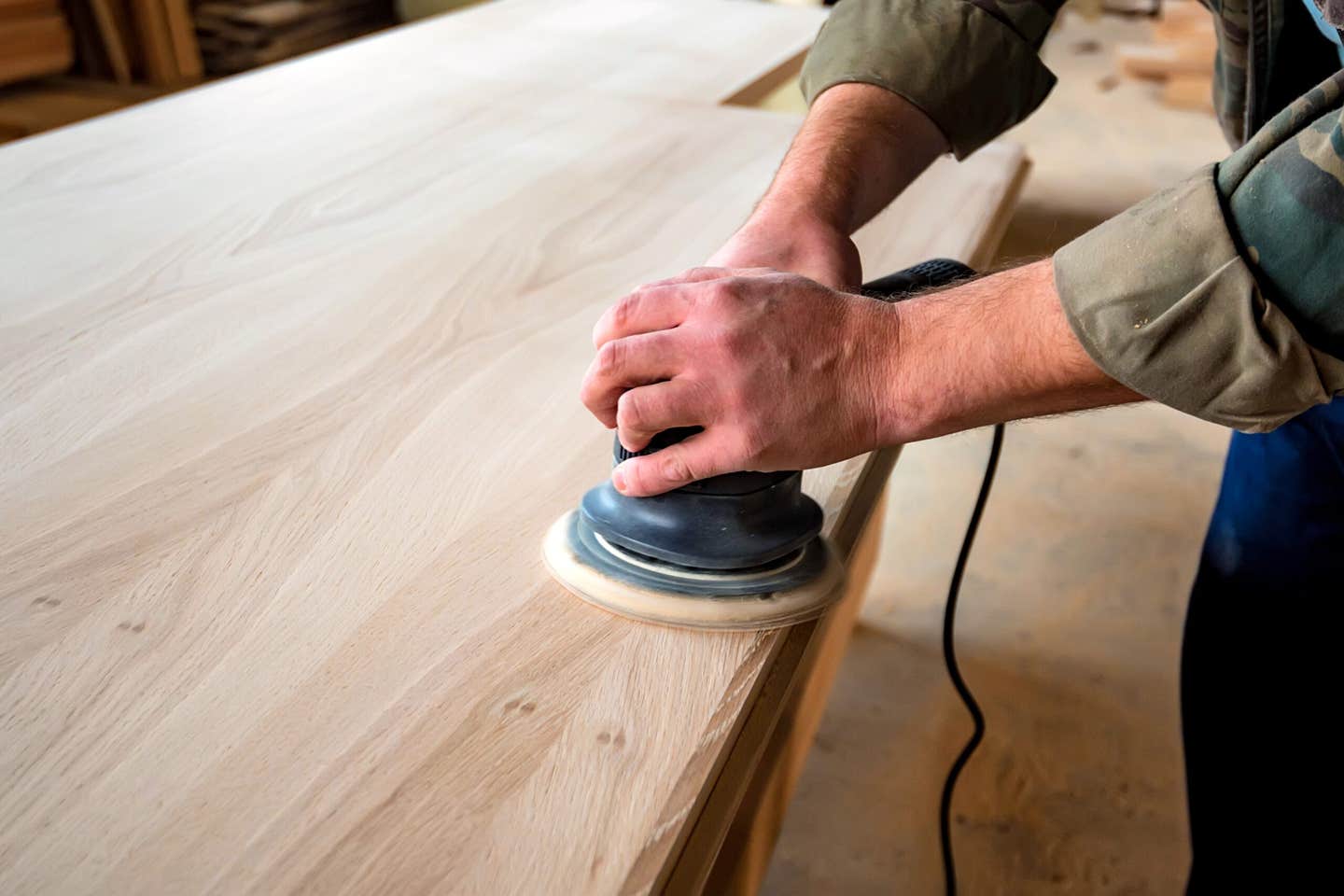Mountain climber
Gat Creek, a producer of custom residential furniture for retailers, is one of the largest companies and employers in Berkeley Springs, W.Va. The company occupies a 90,000-sq.-ft. facility near the…
Gat Creek, a producer of custom residential furniture for retailers, is one of the largest companies and employers in Berkeley Springs, W.Va. The company occupies a 90,000-sq.-ft. facility near the center of town with 118 employees that share a passion for the woodworking industry. There’s no assembly line on the factory floor. Instead, each piece is crafted individually from solid hardwood and signed by the maker.
Owner and founder Gat Caperton purchased the business 20 years ago and, while his manufacturing background taught him the ins and outs of production and construction, he was not a woodworker when he started. His lack of previous experience is impressive when you factor in the sheer size of his operation.
“When I introduce myself to people and tell them that I own a wood furniture factory, there are two obvious assumptions: 1) being that I was born into the business or 2) that I kicked ass in shop. Both assumptions would be wrong in my case,” Caperton says jokingly.
“My dad sold insurance when I was a kid so I didn’t have that excuse and my high school had a really fabulous shop teacher, but I just barely got a B in it and there were kids much better than I was.”
He attributes any success to lean manufacturing principles and the company’s talent for quickly developing new products. While he has dabbled in design, most of his efforts are focused on running and overseeing the operation as a whole.
The name game
Caperton is originally from Charleston, W.Va., about a four-hour drive from Berkeley Springs. He’s got a bunch of stories from his childhood and a humorous, easy-going personality. How he got the name of the business is a whopper. As he explains, the actual Gat Creek is located just outside of Charleston. He named it, declaring the stream “his” during an argument with his little brother when they were kids.
“We went fisticuffs and my parents finally tired out and said I won, so John would have to get something else. Over the years, it was officially called Gat’s Creek. They later put a road down in that area called Gat Road. So there is a creek named after me in Charleston,” he says proudly.
He attended the prestigious Groton School in Groton, Mass., and Davidson College in Davidson, N.C. where he played Division 1 football and earned a liberal arts degree.
“I guess I was pretty good at knocking people over,” Caperton says of his gridiron career. “I lived in Chicago for six years after college where I got an MBA from the University of Chicago, going to night school for two-and-a-half years while working full time in the corporate office for a diversified manufacturing company.”
After some networking and negotiating, in 1996 Caperton ended up purchasing Tom Seely Furniture Co., which was founded in the 1950s and was known for making antique reproductions. Believing great craftsmanship need not be limited to traditional furniture, Caperton created Gat Creek.
“It was a great opportunity. I have a lot of state pride and the idea of being able to come back to my home state was certainly attractive to me. Had fun in Chicago, too. So buying this business allowed me to move home, even though it was further from where I’d lived previously.
“I did a leverage buyout from the founder. I had 5 percent of the purchase price, raised another 5 percent from family and borrowed 90 percent. I quickly implemented lean manufacturing, cut inventory and lead times by 50 percent and reduced debt by more normal levels in under 18 months.”
To Maine and beyond
The purchase included a customer base of independent furniture retailers, stretching from North Carolina to Maine.
“The Washington, D.C., metro area is our best concentration of work. We do very little locally because our work is a little high-end and there are not many people here. There are only 14,000 people in the whole county,” Caperton says.
“We distribute nationally, but are weak in the broad Sunbelt areas. We export to Canada and Japan regularly and a bunch of other countries sporadically.”
The company’s two largest retail partners are Jordan’s Furniture and Belfort Furniture.
“Most of our sales go through independent retailers so we don’t do direct marketing. It’s all B2B so we go to the furniture show at High Point (N.C.) twice a year, publish our catalog and try to maintain a good website,” Caperton adds.
About half of Gat Creek’s furniture is made at the Berkeley Springs facility. The rest comes from a network of 15 to 20 independent shops, an arrangement Seely began almost 30 years ago.
“We basically organize production around pieces of furniture as opposed to components so within our own shops each of the builders will specialize in five to 15 pieces. And with our independent workshops it’s the same thing. They’ll have five to 10 pieces that they build so we really try to specialize product knowledge on a project basis as opposed to a more linear manufacturing process. We do it so each person builds an entire piece of furniture. This allows them to sign and date the piece, making it more personable.”
The Gat Creek product line includes more than 400 pieces that can be custom-made to order. But change is a constant process, Caperton says.
“Product lifespans are shorter as design becomes more and more critical because the public wants something new and fresh. We started off with antique reproductions when I bought the business, which was great; it wasn’t hard. But today there’s a proliferation of styles and looks that are not like they would have been 15, 20 years ago because of the Internet, TV shows and the globalization of the world. The furniture industry used to be just a few styles. So the biggest challenge is product development and selling. We try.”
Trends come and go and Caperton says the biggest challenge is keeping pace.
“With finishes, the world has moved away from warmer tones, which is anything with a red undertone. Most browns, most natural wood has a warm tone. Now so many people want a cooler tone like gray, black, blue or off-white. The trend is definitely heading in that direction.
“In term of domestic woods, 10 years ago cherry was the hottest wood, but that peaked and has since gone down. Before cherry there was maple, before that oak, then walnut became popular with the cool brown with no red undertones. Today, things are moving back to grainy woods like white oak and ash, but in cool finishes in cool colors.”
Behind the scenes
The Gat Creek facility was built in 1972 and there have been several additions. It’s become a bit of a maze, stocked with production machinery and a series of conveyor lines. It also features a large silo for collecting wood waste, which is used to feed the shop’s biomass boiler.
“Machines have helped our operation. I think, in general, we are truly coming towards revitalization of renaissance for American manufacturing. The technology today is revolutionary and changing the way you run a woodshop and making shops more competitive. It’s getting better every year and less expensive every year and it’s fundamentally more efficient,” Caperton says.
The upbeat crew is predominantly local, averaging a round-trip commute of about 15 minutes.
“We’re in a quirky part of the geography where we actually draw from four states: West Virginia, Pennsylvania, Maryland and Virginia,” Caperton says.
Outside of all of the computerized equipment, the shop atmosphere takes a pretty grassroots traditional approach to manufacturing. Each craftsperson has their own postcard with a photograph of them working and a short biography. A personal note is written to the customer and shipped with every piece.
Looking into the future
“I’m trying hard to continue to grow this business at a good pace and try to do it under the same roof. We want to increase our production with what we have. I’ll buy new equipment and all but I want to try to stay in this building. We won’t build a second factory, but I’ll add on to this one if I have to,” Caperton says.
The goal, of course, is to operate near-peak capacity. But Caperton says that has been difficult to achieve during the last decade.
“Our business got bad in late 2006 and the economic downturn beat on us even further. We barely made it out. After 2008, paying everyone on time still feels like a victory every day. I’m still paranoid about sales.
“There’s not much competition around here, but we have incredible indirect competition. We compete with thousands of people in China and there’s very little protection from global trade. There are certainly hundreds of tiny shops we compete with and there’s a dozen people that are larger-scale shops we compete with. But, still, we’re unique. We don’t see anyone out there that’s just like us.”
Contact: Gat Creek, 5270 Valley Road, Berkeley Springs, WV 25411. Tel: 304-258-2343. www.gatcreek.com
This article originally appeared in the June 2016 issue.







